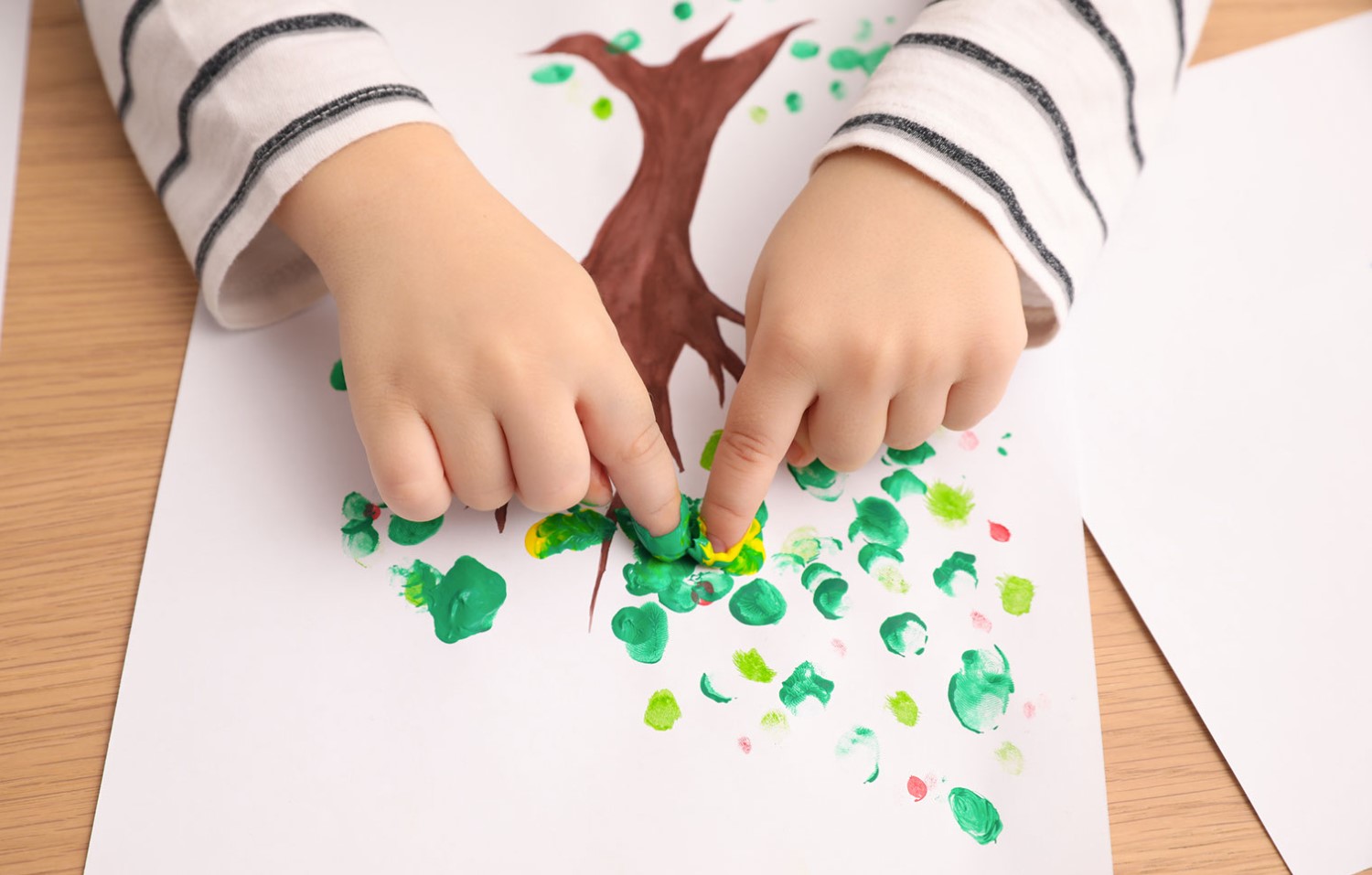
When it comes to art, there are countless mediums that can be used to create captivating masterpieces. From oil on canvas to sculptures made of marble, the possibilities are endless. However, one form of art that often gets overlooked is finger painting. Yes, you heard that right – finger painting! While typically associated with children and messy playtime, finger painting has actually evolved into a serious and impressive art form for adults as well. In this article, we will delve into the fascinating world of finger painting and uncover some mind-blowing facts that will change the way you perceive this unique art style. From its ancient origins to its therapeutic benefits, get ready to be amazed by what finger painting has to offer. So, grab your paintbrush – or rather, your fingers – and let’s dive into the colorful world of finger painting!
Key Takeaways:
- Finger painting is more than just a fun activity for kids. It helps develop motor skills, stimulates the senses, and allows for self-expression, making it a therapeutic and creative art form for all ages.
- From ancient cave paintings to modern art movements, finger painting has evolved and found its place in various cultures. It’s a universal form of art that allows for cultural exploration and expression.
The Origin of Finger Painting
Finger painting, an expressive form of art, originated in ancient cave paintings. The earliest known finger paintings can be traced back to prehistoric times.
The Benefits of Finger Painting for Children
Finger painting is not only a fun activity for children but also has numerous benefits. It helps in developing fine motor skills, creativity, and hand-eye coordination.
Finger Painting and Sensory Stimulation
Finger painting provides a sensory-rich experience as the texture of the paint stimulates the sense of touch. It allows children to explore different sensations and express their emotions through art.
World Records in Finger Painting
Did you know that finger painting has made its way into the record books? The largest finger painting measures a staggering 1,129 square meters, created by hundreds of participants in India.
Famous Artists who Embraced Finger Painting
Not only children, but even renowned artists have explored finger painting as a creative medium. Artists like Iris Scott and Judith Braun have gained recognition for their unique finger painting techniques.
Finger Painting as an Therapeutic Art Form
Finger painting is often used as a therapeutic tool for individuals experiencing stress, anxiety, or trauma. The tactile experience and expression through art can have a calming effect on the mind.
Finger Painting as a Form of Self-Expression
One of the key aspects of finger painting is self-expression. Artists are able to convey their emotions and thoughts through the simple act of using their fingers as brushes.
Finger Painting in Early Childhood Education
Many preschools and early childhood education programs incorporate finger painting into their curriculum. It allows children to explore colors, shapes, and textures in a playful and hands-on manner.
Finger Painting and Therapeutic Benefits for Older Adults
Not just for children, finger painting has shown to have therapeutic benefits for older adults as well. It can enhance cognitive abilities, promote relaxation, and provide an outlet for self-expression.
The Evolution of Finger Painting Techniques
Over the years, finger painting techniques have evolved beyond using just fingers. Some artists use sponges, brushes, and even unconventional tools to create unique textures and effects.
Finger Painting in Modern Art Movements
Finger painting has found its place in various modern art movements. It has been incorporated into abstract art, expressionism, and even street art, adding a new dimension to these art forms.
Finger Painting as a Therapeutic Tool in Occupational Therapy
Occupational therapists often use finger painting as a therapeutic tool to help individuals develop hand strength, coordination, and fine motor skills.
Finger Painting and the Popularity of DIY Crafts
With the rise of the do-it-yourself (DIY) culture, finger painting has gained popularity among adults as a form of recreation and a way to create personalized artwork for home décor.
Finger Painting with Unconventional Mediums
Artists have experimented with using unconventional mediums for finger painting. From mud to food coloring, these unique materials add an extra element of creativity to the artwork.
Finger Painting and the Therapeutic Effects on Mental Health
Studies have shown that finger painting can have therapeutic effects on mental health by reducing stress levels, promoting relaxation, and increasing overall well-being.
Finger Painting and the Experience of Freedom
When artists engage in finger painting, they often experience a sense of freedom and liberation. The direct contact with the paint allows for spontaneous gestures and uninhibited expression.
Exploring Texture with Finger Painting
Finger painting allows artists to explore texture in a unique way. By using their fingers, they can create smooth, rough, or even raised textures on the canvas.
Finger Painting and Cultural Exploration
Finger painting is not limited to any specific culture. It is a universal form of art that transcends language barriers and allows individuals to express their cultural identities through colorful creations.
Conclusion
In conclusion, finger painting is truly an awe-inspiring art form that ignites creativity and captivates audiences. The 18 mind-blowing facts about finger painting have shed light on its rich history, unique techniques, and remarkable achievements. From its humble origins as a form of therapy to its recognition as a legitimate art medium, finger painting has come a long way.The incredible talent and dedication of finger painters have pushed the boundaries of what can be achieved with simple strokes of paint. Their ability to create intricate detail, texture, and emotion using only their fingers is nothing short of astonishing. It is through their masterpieces that we understand the true power and beauty of this art form.Whether you’re an artist, an art enthusiast, or simply curious about the world of finger painting, exploring these mind-blowing facts will surely enhance your appreciation for this expressive and tactile art. So, grab a canvas, dip your fingers in paint, and embark on your own finger painting journey. Let your imagination run wild and see where this extraordinary art form takes you.
FAQs
1. What is finger painting?
Finger painting is an art technique where paint is applied directly to a surface using the fingers, hands, or other body parts. It is a tactile and interactive form of painting that allows artists to create using only their natural touch.
2. Is finger painting only for children?
No, finger painting is enjoyed by people of all ages. While it is commonly associated with children, many professional artists and art enthusiasts practice finger painting as a legitimate art form.
3. What are the benefits of finger painting?
Finger painting offers numerous benefits, including sensory exploration, fine motor skill development, self-expression, stress relief, and therapeutic benefits. It allows individuals to connect with their creative side in a fun and interactive way.
4. Can finger painting be considered a serious form of art?
Absolutely! Finger painting has evolved from being solely viewed as a children’s activity to gaining recognition as a legitimate and respected art medium. Many artists have pushed the boundaries of what can be achieved with finger painting, creating stunning and thought-provoking masterpieces.
5. Are there any famous finger painters?
Yes, there are several well-known finger painters who have made a significant impact in the art world. Iris Scott, for example, is a renowned finger painter known for her vibrant and detailed landscape paintings created solely with her fingers. Other notable finger painters include Judith Braun, Yang Yongliang, and Zaria Forman.
Finger painting sparks creativity, expression, and joy for all ages. Budding artists can explore their imagination with vibrant colors and tactile sensations. Parents seeking the perfect present for their little ones might consider age-appropriate toys that encourage learning through play. Aspiring digital artists looking to hone their skills may find a drawing tablet an invaluable tool in their creative journey.
Was this page helpful?
Our commitment to delivering trustworthy and engaging content is at the heart of what we do. Each fact on our site is contributed by real users like you, bringing a wealth of diverse insights and information. To ensure the highest standards of accuracy and reliability, our dedicated editors meticulously review each submission. This process guarantees that the facts we share are not only fascinating but also credible. Trust in our commitment to quality and authenticity as you explore and learn with us.


